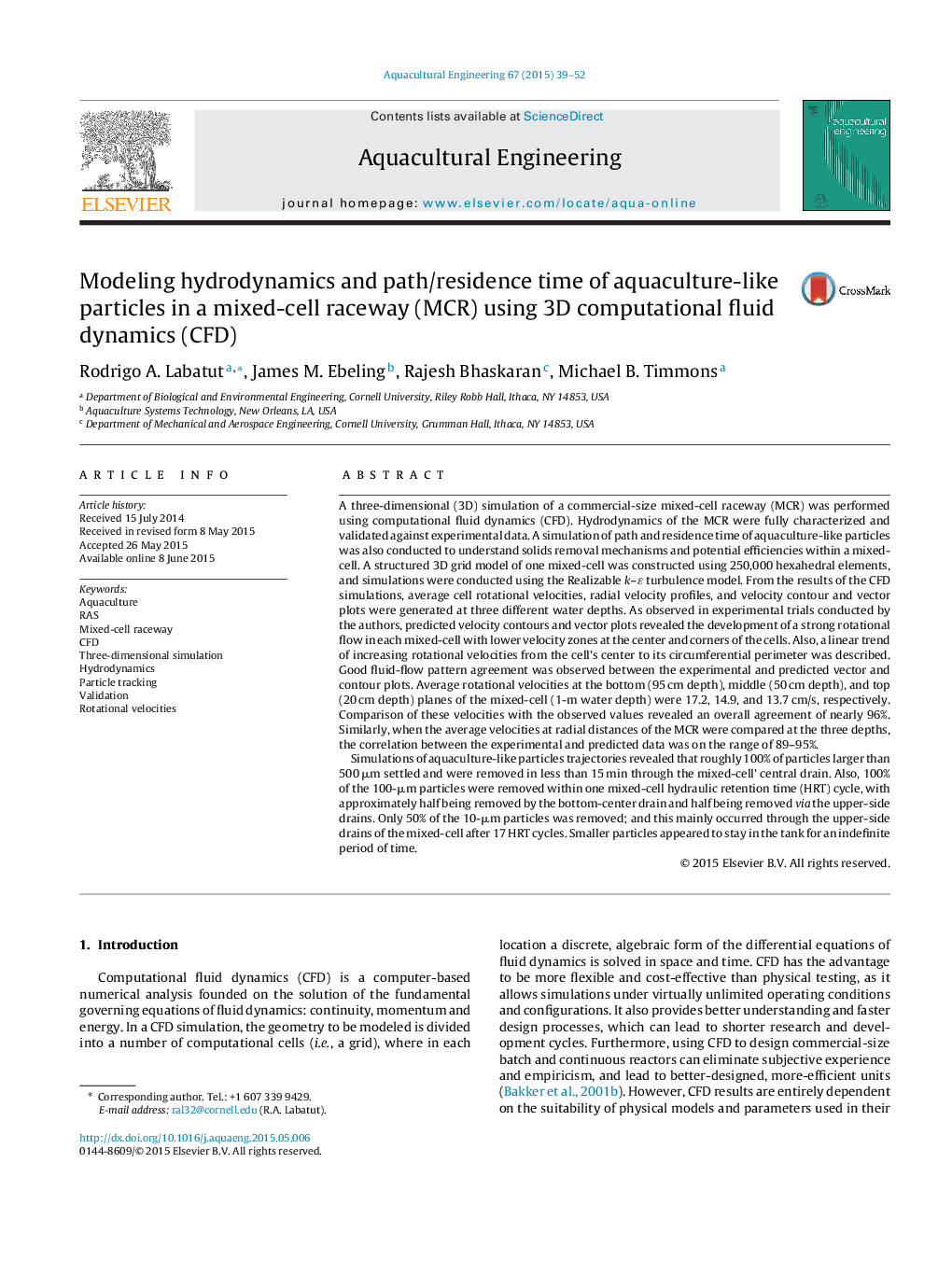| کد مقاله | کد نشریه | سال انتشار | مقاله انگلیسی | نسخه تمام متن |
|---|---|---|---|---|
| 4527169 | 1625703 | 2015 | 14 صفحه PDF | دانلود رایگان |

• 3D simulation of mixed cell raceway (MCR) using computational fluid dynamics (CFD).
• Full characterization of the radial and vertical velocity profiles of MCR.
• Accurate prediction of velocity magnitudes with no need of model calibration.
• Simulated solid particles in the MCR suggest potential removal efficiencies.
A three-dimensional (3D) simulation of a commercial-size mixed-cell raceway (MCR) was performed using computational fluid dynamics (CFD). Hydrodynamics of the MCR were fully characterized and validated against experimental data. A simulation of path and residence time of aquaculture-like particles was also conducted to understand solids removal mechanisms and potential efficiencies within a mixed-cell. A structured 3D grid model of one mixed-cell was constructed using 250,000 hexahedral elements, and simulations were conducted using the Realizable k–ɛ turbulence model. From the results of the CFD simulations, average cell rotational velocities, radial velocity profiles, and velocity contour and vector plots were generated at three different water depths. As observed in experimental trials conducted by the authors, predicted velocity contours and vector plots revealed the development of a strong rotational flow in each mixed-cell with lower velocity zones at the center and corners of the cells. Also, a linear trend of increasing rotational velocities from the cell's center to its circumferential perimeter was described. Good fluid-flow pattern agreement was observed between the experimental and predicted vector and contour plots. Average rotational velocities at the bottom (95 cm depth), middle (50 cm depth), and top (20 cm depth) planes of the mixed-cell (1-m water depth) were 17.2, 14.9, and 13.7 cm/s, respectively. Comparison of these velocities with the observed values revealed an overall agreement of nearly 96%. Similarly, when the average velocities at radial distances of the MCR were compared at the three depths, the correlation between the experimental and predicted data was on the range of 89–95%.Simulations of aquaculture-like particles trajectories revealed that roughly 100% of particles larger than 500 μm settled and were removed in less than 15 min through the mixed-cell’ central drain. Also, 100% of the 100-μm particles were removed within one mixed-cell hydraulic retention time (HRT) cycle, with approximately half being removed by the bottom-center drain and half being removed via the upper-side drains. Only 50% of the 10-μm particles was removed; and this mainly occurred through the upper-side drains of the mixed-cell after 17 HRT cycles. Smaller particles appeared to stay in the tank for an indefinite period of time.
Figure optionsDownload as PowerPoint slide
Journal: Aquacultural Engineering - Volume 67, July 2015, Pages 39–52